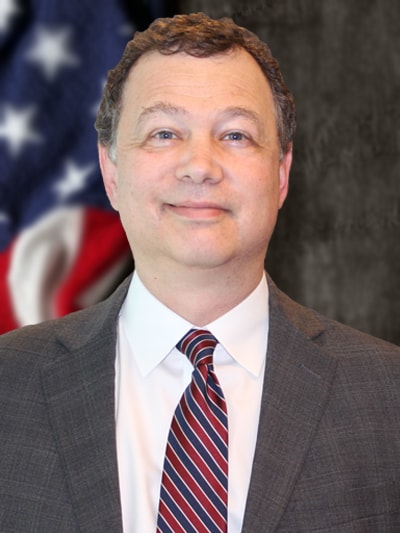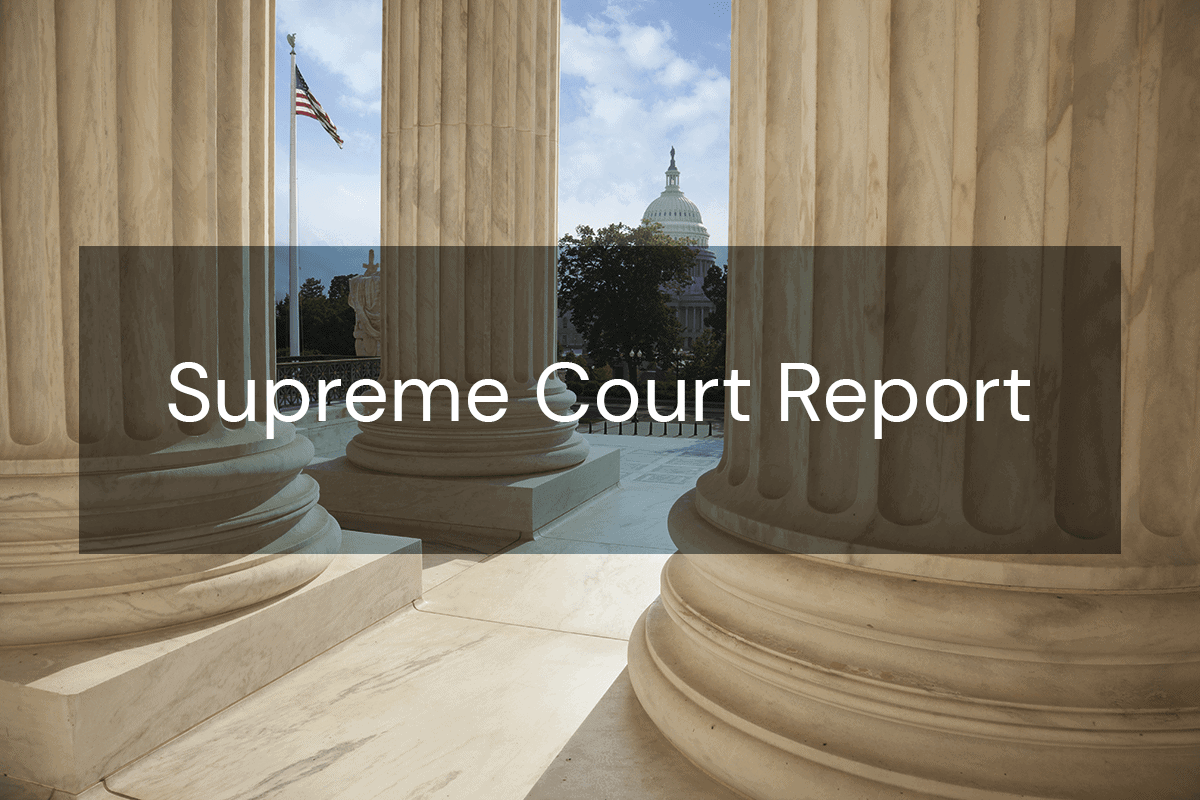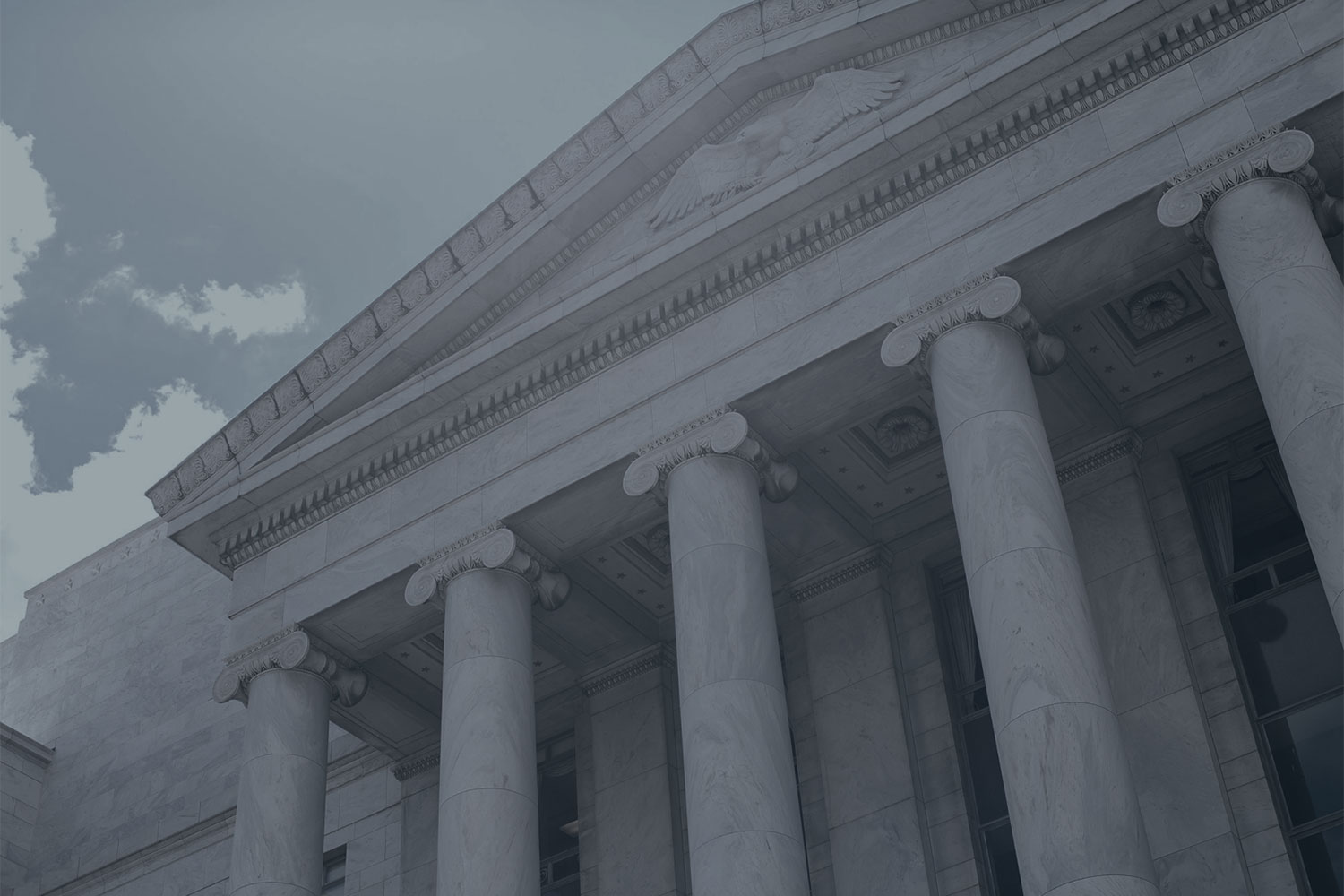-
 Director, Center for Supreme Court AdvocacyNational Association of Attorneys General
Director, Center for Supreme Court AdvocacyNational Association of Attorneys General

This Report summarizes opinions issued on January 13, 2022 (Part I); and cases granted review on January 10, 2022 (Part II).
Cases Granted Review: Siegel v. Fitzgerald, 21-441
Siegel v. Fitzgerald, 21-441. This case involves the constitutionality of provisions of the Bankruptcy Judgeship Act of 2017, which established a fee structure in the 88 federal districts using a United State Trustee that is different from the fee structure in the six federal districts participating in the Bankruptcy Administrator program. At issue is whether this different fee structure violates the uniformity provision of the Bankruptcy Clause (Art. I, §8, cl. 4), which empowers the Congress to “establish . . . uniform Laws on the subject of Bankruptcies throughout the United States.”
In 1978, Congress established a U.S. Trustee Pilot Program to address systematic problems in bankruptcy administration. Most notably, before 1978 bankruptcy courts handled both the judicial and administrative functions in every bankruptcy. As the General Accounting Office concluded, this dual role often placed those courts “in an untenable position of conflict and seriously compromised their impartiality as arbiters of disputes.” In 1986, having deemed the pilot program a success, Congress formerly established the U.S. Trustee program nationwide. There were, however, two exceptions. As a result of lobbying by politicians and judges in North Carolina and Alabama, those two states were excluded from the trustee program, and instead participated in what is known as the Bankruptcy Administrator program. One of the main differences between the two programs was (and continues to be) that, while the Trustee program was housed within the executive branch at the Department of Justice, the Administrator program was housed within the judicial branch under the Judicial Conference. And the effect of that difference, pertinent to this matter, was funding. With the intent that the U.S. Trustee program be self-funded, Congress imposed quarterly fees on Chapter 11 debtors in Trustee districts. Congress, however, initially chose not to impose those same fees in Administrator districts; the funding for that program came instead from judiciary’s general budget.
In 1994, the Ninth Circuit held that this disparity in fees, which made bankruptcies more costly outside of North Carolina and Alabama, violated the Bankruptcy Clause’s uniformity provision. Congress responded to the decision by granting the Judicial Conference discretion to impose fees in Administrator districts; a year later the Judicial Conference invoked that authority and imposed fees in Administrator districts equal to those imposed in Trustee districts. This arrangement persisted until 2017, when the Trustee program sought to address budget shortfalls that had resulted from fewer bankruptcy filings. Through the Bankruptcy Judgeship Act of 2017, Congress imposed a five-year increase in quarterly fees for Chapter 11 debtors in Trustee districts for any year where the Trustee fund dipped below a threshold amount. Congress did not, however, impose a similar increase in Administrator districts. Although the Judicial Conference exercised its discretionary authority to impose similar fees, the Judicial Conference’s increase in fees differed from that imposed in Trustee districts in two key respects: (1) it applied beginning on October 1, 2018, nine months after the increase in Trustee districts had begun, and (2) the fees applied only prospectively (unlike in Trustee districts, where the fees applied to then-pending bankruptcies), so that any bankruptcy filed in Alabama or North Carolina before October 2018 would never be subject to the increased fees. Although Congress amended the fee statute in 2021 to mandate that the Judicial Conference impose fees equal to those imposed in Trustee districts, Congress did not address the disparities described above.
Petitioner here is the trustee overseeing the liquidation of the assets of former electronics retailer Circuit City, which filed for Chapter 11 bankruptcy in 2008 in the Eastern District of Virginia (a Trustee district). In a 2-1 decision, the Fourth Circuit widened a circuit split by rejecting petitioner’s claim that the 2017 Act and its imposition of different fees in Trustee and Administrator districts created nonuniform (and thus unconstitutional) bankruptcy laws. 996 F.3d 156. Relying on the principle that the Bankruptcy Clause forbids only “arbitrary” geographic differences, the Fourth Circuit held that the 2017 Act was an appropriate exercise of authority because Congress “drew a program-specific distinction that only indirectly has a geographic impact” and “provided a solid fiscal justification” for differentiating between the two programs.
In arguing for reversal, petitioner incorporates the dissenting opinion in the Fourth Circuit (as well as a unanimous decision from the Second Circuit) concluding that the imposition of quarterly fees in the two bankruptcy systems is not uniform and therefore unconstitutional. In addition to concluding that the 2017 Act is a substantive bankruptcy law (rather than a local procedural rule to which the Bankruptcy Clause would not apply), Judge Quattlebaum in dissent rejected the notion that the 2017 Act was a proper fiscal response that was not geographically based because it applied to all Trustee districts regardless of location. Judge Quattlebaum instead observed that the only reason the Trustee districts faced a budgetary problem was because Congress treated those districts differently from the outset by establishing different programs that were based on geography.
[Editor’s note: Some of the language in the background section of the summary above was taken from the petition for writ of certiorari and brief in opposition.]



